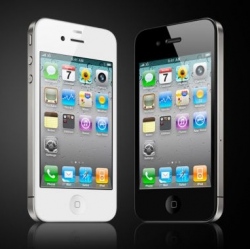
The Cota transmitter technology that makes this legitimate wireless charging technology work was developed by a company called Ossia who is planning to get it into consumer’s hands by the end of the year. Before 2016 is up, true wireless charging in your home will be a reality.
So how does Ossia’s wireless charging system work? It might take a while to wrap your head around the technology, but it’s remarkably clever. Devices that are able to charge from the Cota base station, which looks not unlike a glowing garbage can packed full of thousands of tiny antennas, need to be upgraded with a built-in RF receiving chip that doubles as a beacon.
Having Ossia’s Cota chip built into a device isn’t completely essential for it to be able to charge wirelessly, but it’s a more elegant solution. A smartphone without the chip inside would need to live inside a bulky wireless charging case, which isn’t exactly ideal. Ossia is working towards further miniaturing the receiver chip so that smartphone makers are able to squeeze into their hardware, but it’s still good to know that older devices can be upgraded with wireless charging powers through a case.
One hundred times every second that Cota chip sends out an RF signal like a homing beacon that’s picked up by the thousands of tiny antennas inside the larger Cota base station. Every last one of those tiny antennas detects that RF ping from a slightly different angle, and the base station responds by then sending wireless RF power back out in the exact same direction.
Those wireless RF power signals take the exact same path as the original RF signals from the device did, just in the opposite direction, ensuring they arrive exactly where they’re needed to efficiently charge a device.
It’s complex stuff, but what’s most important is that it works. The Cota hardware that Ossia plans to get into consumer’s hands later this year has a range of about 10 feet, enough to wirelessly charge devices in a single room. But the company eventually plans to follow-up with larger base station units that are capable of blanketing an entire home with wireless power.
Are there compromises that come with the first generation of wireless charging? Definitely. Charging your phone wirelessly with just a single watt of power being beamed through the air means it will take up to four times as long as it does when charging with a cable.
And only a single device can be receiving power at one time. Through an app and some intelligent back-and-forth communications with multiple devices in range, the base station can triage which devices need charging first, and will automatically juggle between them based on their power demands.
So don’t expect a quick charging turnaround if you’ve got a stack of phones in need of power in a room. But to demonstrate other useful applications of the technology, Ossia has also developed a AA battery that will stay perpetually-charged as long as its within range of the Cota base station.
Imagine never having to change the batteries in your TV remote ever again. Is that enough to justify the system once it’s finally available? Probably not for the average consumer, but if you’re an early adopter, this is may be one of the coolest technologies to arrive recently.
